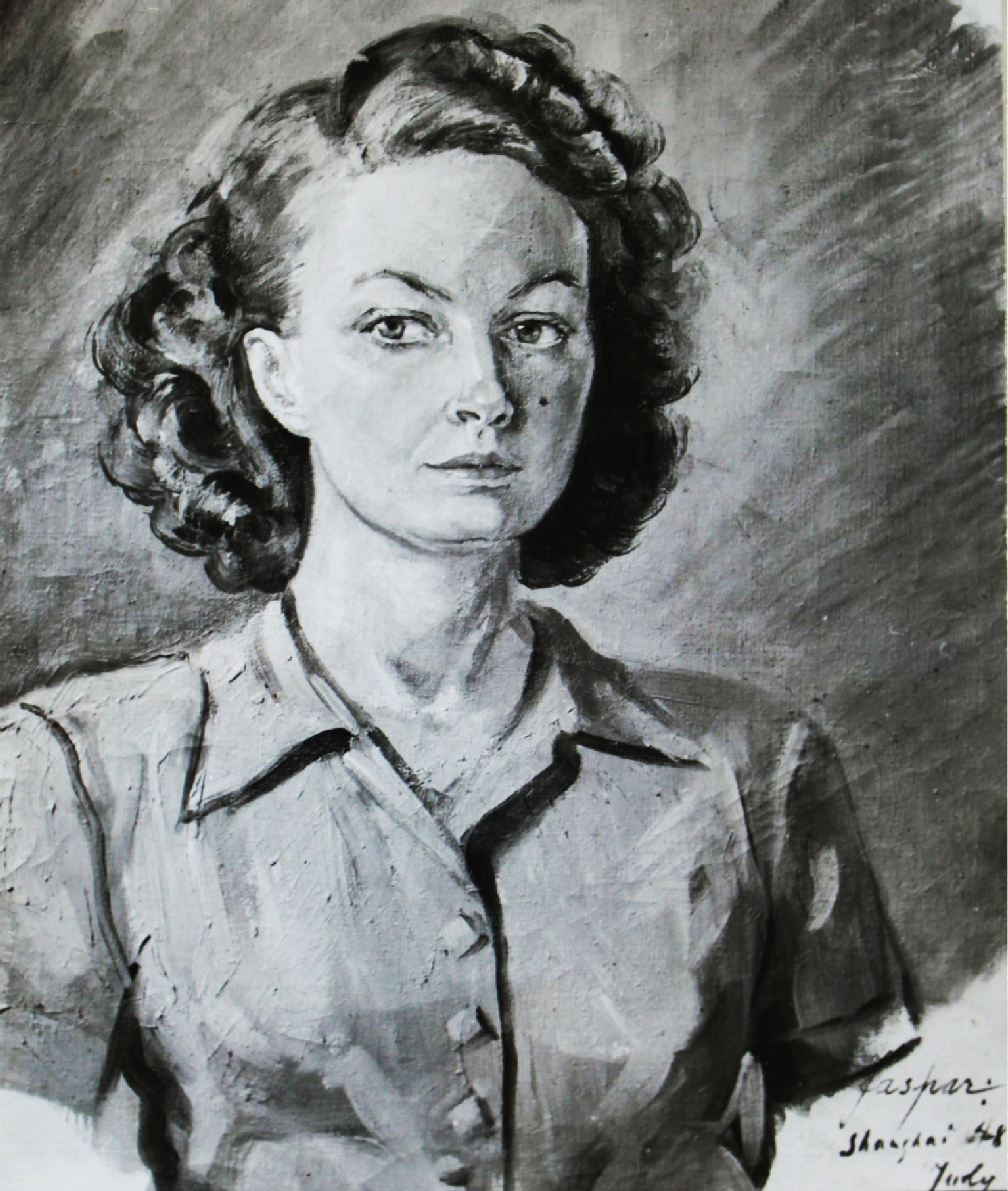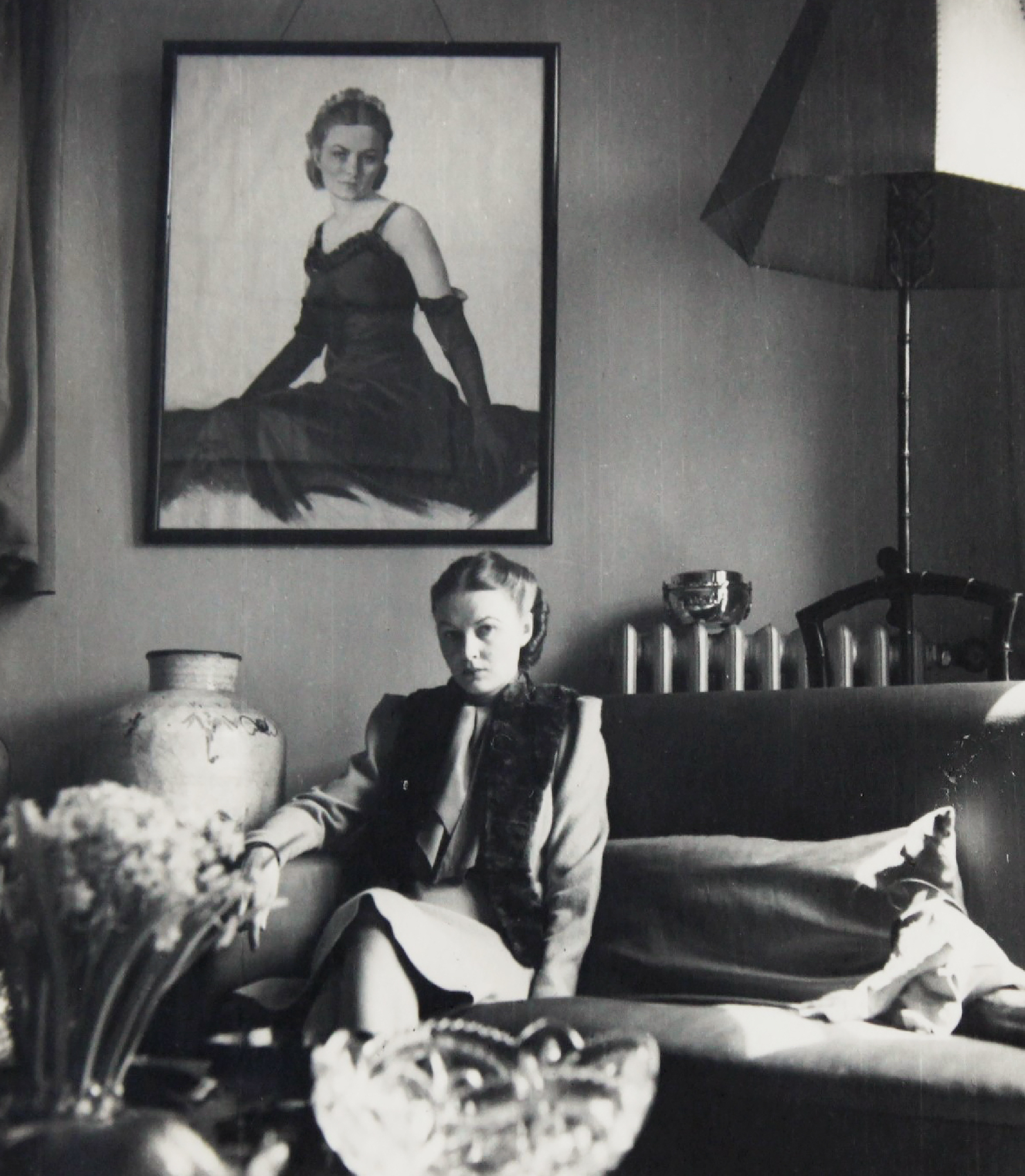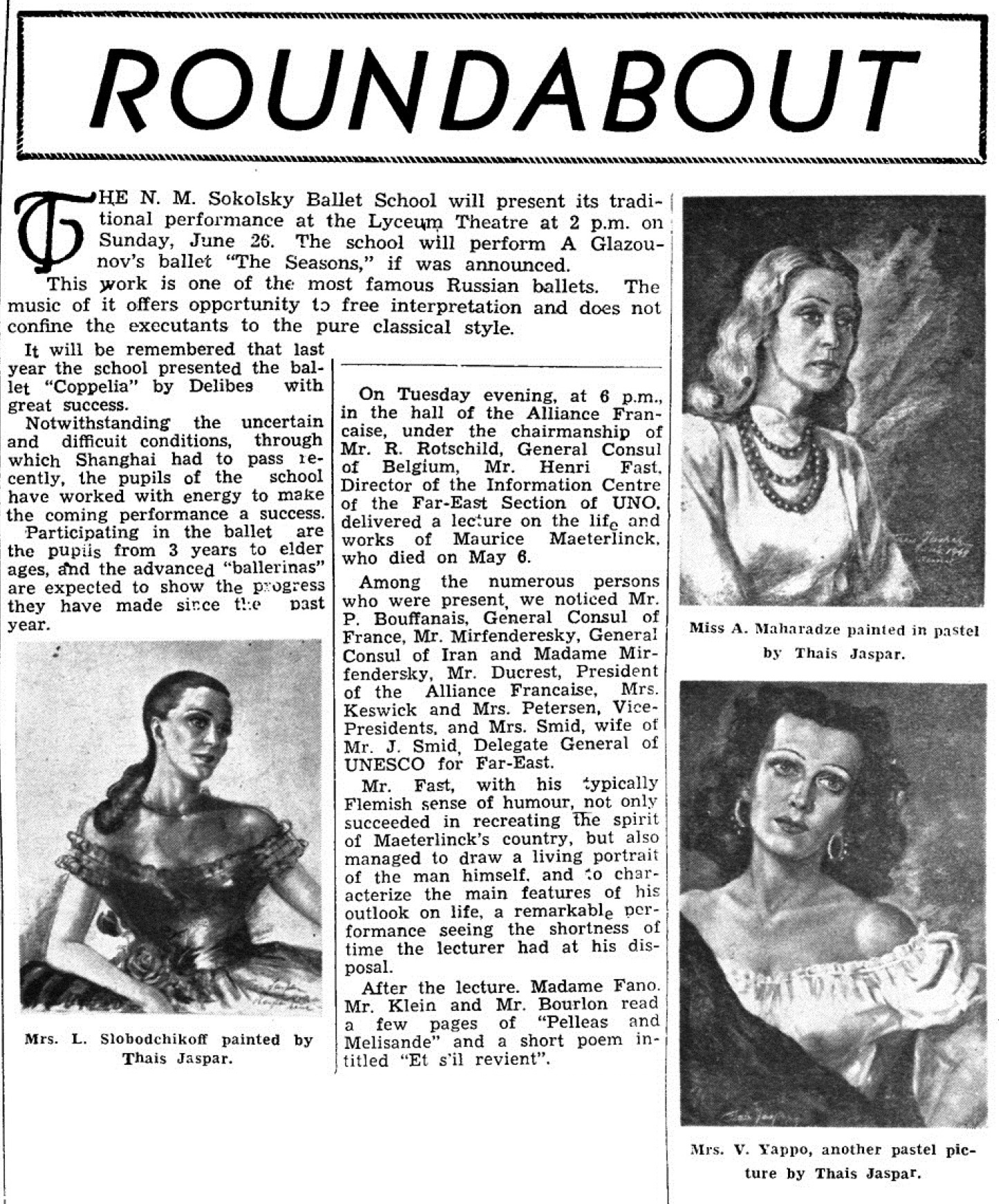Archive
Thais Jaspar
- Thais
- Jaspar
Таисия Павловна Жаспар
- 05-09-1912
- Tobol’sk (RU)
- 25-11-1986
- Kiev (UA)
- Artist
Combining the vocation of philanthropist with that of an artist, Thais Jaspar was equally at ease among the foreign elites and Soviet diplomats in Shanghai. Her pleasing portraiture was much in demand by her friends and clients.
Word Count: 37

Thais Jaspar, Self-portrait, drawing, around 1938, Shanghai (© Central State Archive of the Museum of Literature and Art, Ukraine). 
Thais Jaspar at her Shanghai home, photography 1930 (© Central State Archive of the Museum of Literature and Art, Ukraine). 
Thais Jaspar (right) in front of her work celebrating the victory of the USSR in the Great Patriotic War, photography, Shanghai, 1945 (© Central State Archive of the Museum of Literature and Art, Ukraine). 
Thais Jaspar (back row, right) teaching an art class, 1940, Shanghai (© Central State Archive of the Museum of Literature and Art, Ukraine). 
Thais Jaspar, paintings, North China Daily News, 19 June 1949. Andriuschenko, Eduard. “Madame Thais. Part 1.” Current Time. https://www.currenttime.tv/a/case-thais-jaspar-part-i-madame-thais/30338989.html. Accessed 2 March 2021.
Rybina-Kosova, Elena. “Thais Jaspar, legenda treh stran (Thais Jaspar, legend of three countries).” Slovo. http://www.gazeta-slovo.ru/kultura/4240-tais-zhaspar-legenda-trjokh-stran. Accessed 2 March 2021.Word Count: 38
Harbin, China (1917–1930); Shanghai, China (1930–1947)
303 Route Cohen, French Concession (now Gaolan Lu, Huangpu Qu) (residence) Shanghai
- Shanghai
- Katya Knyazeva. "Thais Jaspar." METROMOD Archive, 2021, https://archive.metromod.net/viewer.p/69/2952/object/5138-11320443, last modified: 08-05-2021.
-
Mikhail KichiginArtistDesignerTeacherShanghai
Mikhail Kichigin was Shanghai’s preeminent émigré artist in the 1930s and 1940s. He travelled extensively around China and Eastern Asia, exhibiting his work and conducting visual studies. A versatile professional and a respected art instructor, he influenced a number of young artists from the Russian diaspora.
Word Count: 47
HLAM – Society for Artists, Writers, Entertainers and MusiciansAssociationShanghaiAs Shanghai’s largest and most popular Russian émigré association focused loosely on art, HLAM provided a platform for weekly encounters between the self-professed bohemians and a general audience. The HLAM evenings included theatre scenes, comic routines, dance numbers and poetry readings.
Word Count: 42
Vera KuznetzovaArtistDesignerIllustratorShanghaiA native of Harbin and a resident of Shanghai in the 1930s and 1940s, Vera Kuznetzova was among the most accomplished female artists of the Russian diaspora. Together with Mikhail Kichigin, she travelled extensively around China and Eastern Asia, exhibiting her work and conducting visual studies.
Word Count: 46
Victor PodgourskyArtistDesignerTeacherShanghaiVictor Podgoursky spent more than twenty-five years in Shanghai, working as an artist, teacher and designer. As a long-standing member of the Shanghai Art Club, he acted as the resident art critic and an instructor in life drawing and painting for the members.
Word Count: 43